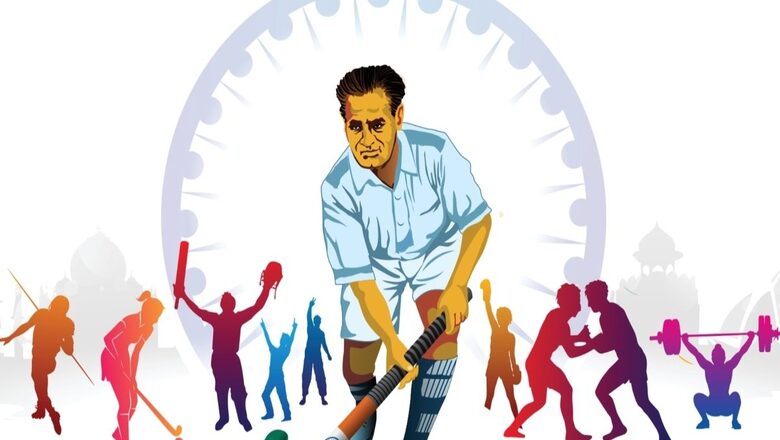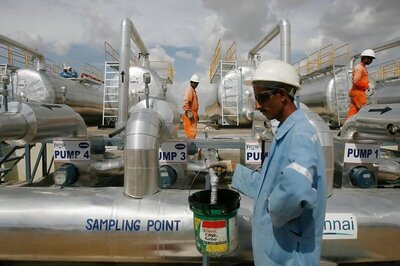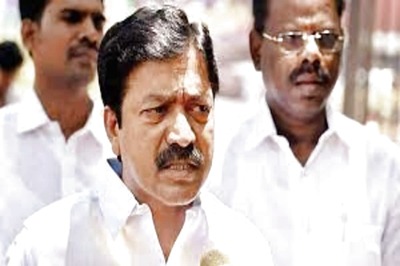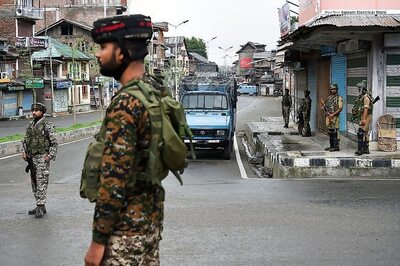
views
India’s sporting journey made a humble beginning in 1900 at the Paris Summer Olympics, when the sole Indian entry among a total of 1226 athletes, Norman Pritchard, romped home with two silver medals in 200m sprint and 200m hurdles. Calcutta-born Briton, Pritchard’s legacy is controversially claimed by both India and Britain, though on the Olympics website, the medals are shown under the Indian flag.
Humongous Olympic Journey of High and Lows
From Paris 1900 to Tokyo 2020, the Indian Olympic journey has been of ‘Thoda Khushi Jyada Gham’ with a total of 35 medals in 25 editions of the game. Interestingly, out of 25 editions, the Indian contingent drew a blank, returning home medal-less six times and with a single medal 13 times. Only on six occasions, the Indian contingent returned home with two or more medals — 1900 Paris (2), 1952 Helsinki (2), 2008 Beijing (3), 2012 London (6), 2016 Rio de Janeiro (2) and 2020 Tokyo (7).
As regards the colour of the medals, of the total 35, 10 are gold, nine are silver and 16 are bronze. Interestingly, out of 10 gold medals, 8 were brought home by the Men’s Hockey Team including five on a trot.
India’s first individual medal winner in the male category was KD Jadhav at 1952 Helsinki while the first medal — a bronze — in the female category came in 1996 Atlanta to weightlifter Karnam Malleswari. The century-long wait for individual gold ended only in 2008 in Beijing with Abhinav Bindra in the 10m Air Rifle event.
The Barren Track
After two silvers of Pritchard in 1900, for 120 years, India’s track record in track and field events was barren, with the consolation prize being two legendary near misses — ‘Flying Sikh’ Milkha Singh in the 400m at Rome 1960 and ‘Payyoli Express’ PT Usha’s heartbreak bronze miss in the 400m hurdles at Los Angeles 1984 by 1/100th second. The century-old wait ended with the ‘golden arm’ of Neeraj Chopra at Tokyo 2020 with a first-ever track-and-field gold. Tokyo also saw best best-ever Indian performance with 7 medals.
Back to Present: Budapest
In August 2023, 25-year-old Neeraj Chopra, with his Javelin gold at the World Athletics Championship in Budapest, became only the third javelin thrower in history to hold both the Olympic and World Championships crowns simultaneously. Before Chopra, only Jan Železný of the Czech Republic and Andreas Thorkildsen of Norway held the Olympics and World Championships titles simultaneously. In the earlier edition of the World Athletics Championships, Chopra, with historic silver, became the second Indian and first Indian male to win a medal emulating the bronze of legendary long jumper Anju Bobby George. She was the first Indian to win a medal at the World Championships in the 2003 edition in Paris.
Budapest 2023 was notable for India for other accomplishments as well. The historic javelin final of 12 had two more Indians — Kishore Jena and DP Manu — who ended with creditable fifth and sixth spots respectively. The middle-distance runner Parul Chaudhary in the 3000m Women’s Steeplechase with an astounding feat of surpassing her personal best twice, bested the qualification benchmark for the 2024 Paris Olympics. No less creditable of the performance of the Men’s 4x400m Relay Team comprising Muhammad Anas Yahiya, Amoj Jacob, Muhammad Ajmal Variyathodi, and Rajesh Ramesh who finished in fifth place with a time of 2:59.92 in finals. And not to forget, from 21 participants in the earlier edition, the number leapfrogged to 27 in Budapest.
Over to Hangzhou
On September 23, 2023, the 19th Asian Games will kick off at Hangzhou, the most populous city of Zhejiang Province in East China, with 481 gold medals on offer. The biggest-ever Indian Asian Games contingent of 634 athletes (who will compete in 38 different sports) is raring to go and beat its best-ever performance in the last 2018 edition at Jakarta which has a contingent of 570 in 36 sports.
India, supposedly a powerhouse at the very first edition of the Asian Games in Delhi in 1951 with 51 medals (15 gold, 16 silver and 20 bronze), was next only to Japan (60 medals).
Sadly, in the last 70 years, India has failed to achieve a finish better than 1951. In 2018, its medal tally of 70 (16 gold, 23 silver, 31 bronze) notwithstanding, it ranked 8. As against that, China in 2018 topped the chart with 289 medals (132 gold, 92 silver and 65 bronze), leading the medal count for the tenth time in Asian Games history.
It is instructive to note that India, soon to dethrone China as the most populous country in the world, so far has 672 medals to its credit in the Asian Games comprising 155 golds, 201 silvers and 316 bronze. This pales into insignificance when compared to the Chinese performance of a total of 3,187 medals at Asiad, including 1,473 gold, 994 silver and 720 bronze.
Time to Break the Jinx
India’s story in the continental games has been of one step forward and two steps backwards and it is about time to break the jinx and leapfrog learning from the Indian “next practices” success of Chandrayaan-3. It is time to look beyond the moon. If India has to become a true sporting powerhouse, incremental performance improvement will not suffice, and as a starter, the Indian team has to aim big with a resolute conviction that nothing less than doubling the Jakarta Games medal tally of 70 and cracking the 150-medal tally at Hangzhou will work.
India Needs Self-Belief and Paradigm Shift
India, a nation crazily in love with cricket, needs a paradigm shift. Quantum jump in performance, at least in Asiad, need not be a pipe dream. One Neeraj Chopra in no time has motivated three javelin throwers to come to the world stage. One Pullela Gopichand has created an army of world-beater badminton stars. Motivated and nurtured by one Vishwanathan Anand, India has today 83 Grand Masters in chess including world-beater youngsters who are part of this Asiad chess squad. If governments (Central and state), corporates and other stakeholders purposely put their whole might behind sports, India can make all round quantum jump in sports.
It is time to look beyond and create India’s own “Sporting Next Practices”, otherwise there is no point wasting time and money by dreaming of hosting the World Athletic Championship and Olympics in India.
India and Bharat, thy time starts.
Creating India’s Own ‘Sports Next Practices’
The emergence of sporting icons in India is by chance, not by design. For most, it has been a tortuous solo journey with immense sacrifices by families. Out-of-pocket expenses by the family are simply humongous. There is no concerted action either at the macro or micro level to find and nurture sporting young talent. It is time for a change. The laundry list of urgently needed actions is long, here are some of them.
- In the federal set-up, as per item 33, List 2 of the Seventh Schedule of the Constitution of India, “sports” is a state subject. There is an immediate need for an Amendment to the Constitution to bring “sports” to the Concurrent List if purposive action has to start.
- If the government’s dream of making India among the top five sporting nations of the world by 2047, when it celebrates 100 years of independence, is to be actualised, it needs massive, planned investment on a recurrent basis. There is no dearth of money in the country, and if there is, it is time to create a dedicated nonfungible, non-lapsable and non-transferrable “sports fund” through a dedicated levy on cigarettes and alcohol.
- It is about time that each state takes responsibility for nurturing at least one sport (bigger states two sports). It will have a cascading effect. If proof of the success of this method is needed, it is time to look at just two states — Odisha and Haryana. How Odisha is transforming hockey in India and how Haryana has developed as a wrestling powerhouse. Also, in developing and nurturing sporting talent, the corporate sector has an important role to play.
- When it comes to sporting infrastructure, India has hit the nadir. A massive, coordinated plan of time-bound development of world infrastructure with top-level coaches at ground level is the biggest imperative. And talking of sporting best practices infrastructure, it has to percolate down to census towns, blocks, and gram panchayat level.
- As per the Statista database, in 2021, India’s population in the 0-14 age group was 25.6 per cent. It is this age group that has to be the target population for creating sporting icons. And, to make sure that in the process they do not face an education deficit and fall into penury, their financial needs must be ring-fenced.
- To make sports a priority, make children fall in love with it and let all adults take ownership to make India a sporting great. Sadly, even after 75 years of independence we, as a society, do not let sports last beyond childhood and kill the sporting zeal with the long-entrenched wholly dated paradigm of “Padhoge, likhoge, banoge nawab; kheloge, kudoge, hoge kharab” (If you study hard, you will live like a king; but if you play sports, you will ruin your life).
India is not just a sporting nation. Period. It is time to invert the pyramid and create an emotional and attitudinal sporting ecosystem concurrently with the infrastructure and financial ecosystem. And it is time to de-bureaucratise and depoliticise sports.
Postscript: Khelo Olympics, Chalo Paris
The sporting journey of India took the first baby steps at the Paris Olympics in 1900. Next year, Paris will host its third Summer Olympics (only second after London to do so). But the child known as India, never grew up. It takes pride in its best Olympic performance of seven medals with barely two individual golds in its lifetime. Let the immediate term goal be “war cry of 25 medals at Paris 2024”. For the naysayers who think it is impossible, look at how China, from 28 medals at the 1988 Seoul Olympics catapulted to 54 medals at 1992 Barcelona including 16 gold, 22 silver and 16 bronze with overall fourth rank. At the same Olympics, a 52-member Indian team participating in 12 sports when it comes to medals had a dismal performance, with a medal scoreline of 0-0-0.
I rest my case. Over to you, my India.
Akhileshwar Sahay is a Multidisciplinary Thought Leader with Action Bias, India based International Impact Consultant and an ardent sports lover. He works as President Advisory Services of consulting company BARSYL. Views expressed in the above piece are personal and solely that of the author. They do not necessarily reflect News18’s views.




















Comments
0 comment